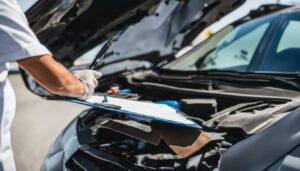Regular vehicle maintenance is essential for keeping cars running smoothly and safely. It involves performing routine checks and repairs to ensure that all parts are functioning correctly. Vehicle maintenance also helps to prevent breakdowns and costly repairs, ultimately extending the life of the vehicle.
In the USA, regular vehicle maintenance is particularly important due to the country’s reliance on cars as the primary mode of transportation. With over 280 million registered vehicles in the country, the demand for maintenance services is high. However, despite the importance of regular maintenance, many car owners neglect to take their vehicles in for servicing, leading to potential safety hazards and expensive repairs down the line.
To address these issues, various challenges and solutions have arisen in the field of vehicle maintenance. From the rise of mobile mechanics to the development of new technology for detecting and preventing issues, the industry is constantly evolving to meet the needs of car owners. By understanding the importance of regular vehicle maintenance and staying up to date on the latest trends and solutions, car owners can keep their vehicles running smoothly and safely for years to come.
Types of Traffic Tickets in the US – Ultimate Guide
Key Takeaways
- Regular vehicle maintenance is crucial for keeping cars running smoothly and safely.
- The USA’s reliance on cars as the primary mode of transportation makes regular maintenance particularly important.
- The vehicle maintenance industry is constantly evolving to meet the needs of car owners, with new solutions and technologies emerging all the time.
Understanding Vehicle Maintenance
Definition of Vehicle Maintenance
Vehicle maintenance refers to the regular upkeep and repair of a vehicle to ensure it remains in good working condition. Regular maintenance is essential to keep the car running smoothly and prevent costly breakdowns. It involves various tasks like oil changes, tire rotations, brake inspections, and fluid checks.
Regular maintenance can help identify potential issues early on and prevent them from becoming major problems. It also helps to extend the life of the car and maintain its resale value. Neglecting maintenance can lead to expensive repairs and even accidents.
Types of Vehicle Maintenance
There are two types of vehicle maintenance: preventive maintenance and corrective maintenance.
Preventive Maintenance
Preventive maintenance involves routine checks and services to prevent potential problems. It includes tasks like oil changes, tire rotations, brake inspections, and fluid checks. Preventive maintenance is usually performed at regular intervals, such as every 5,000 miles or every six months. It helps to keep the car running smoothly and prevent costly breakdowns.
Corrective Maintenance
Corrective maintenance involves repairing a problem that has already occurred. It includes tasks like replacing a broken part, fixing a flat tire, or repairing a malfunctioning engine. Corrective maintenance is usually performed when a problem is detected during routine maintenance or when a part fails. It is generally more expensive than preventive maintenance and can lead to longer periods of downtime for the vehicle.
Importance of Regular Vehicle Maintenance
Regular vehicle maintenance is essential for keeping a car in good condition, ensuring safety on the road, and saving money in the long run. By following a car’s maintenance schedule and taking care of the vehicle, one can improve its longevity, safety, fuel efficiency, resale value, and environmental impact.
Safety
Regular vehicle maintenance is crucial for ensuring safety on the road. A well-maintained car is less likely to break down unexpectedly, reducing the risk of accidents. For example, regular brake inspections can help identify and fix worn brake pads before they become a safety hazard. Additionally, a properly maintained car will have better handling and performance, which can help prevent accidents caused by poor vehicle control.
Vehicle Longevity
Regular vehicle maintenance can help extend the life of a car. By following the manufacturer’s recommended maintenance schedule, one can identify and fix minor problems before they become major issues that can cause expensive repairs or even total engine failure. Regular oil changes, for example, can help keep the engine running smoothly and prevent premature wear and tear.
Cost Efficiency
Regular vehicle maintenance can save money in the long run. By identifying and fixing minor problems early, one can avoid expensive repairs down the road. Additionally, a well-maintained car will have better fuel efficiency, reducing the cost of gas. Finally, a well-maintained car will have a higher resale value, making it easier to sell when it’s time to upgrade.
In conclusion, regular vehicle maintenance is essential for ensuring safety on the road, extending the life of a car, and saving money in the long run. By following the manufacturer’s recommended maintenance schedule and taking care of the vehicle, one can improve its longevity, safety, fuel efficiency, resale value, and environmental impact.
Vehicle Maintenance in the USA
Vehicle maintenance is an essential aspect of owning a car in the USA. Regular maintenance ensures that the vehicle remains in good condition and extends its lifespan. In this section, we will explore the maintenance standards and regulations in the USA.
Maintenance Standards
The USA has a set of maintenance standards that every car owner must adhere to. These standards are designed to ensure that vehicles are safe, reliable, and efficient. Some of the maintenance standards include:
Regular oil changes: Oil changes are necessary to keep the engine running smoothly. Car owners should change their oil every 5,000 to 7,500 miles, depending on the make and model of the vehicle.
Brake inspections: Brake inspections are necessary to ensure that the brakes are functioning correctly. Car owners should have their brakes inspected every 12,000 miles or as recommended by the manufacturer.
Tire rotations: Tire rotations are necessary to ensure that the tires wear evenly. Car owners should rotate their tires every 5,000 to 7,500 miles.
Fluid checks: Fluid checks are necessary to ensure that the vehicle’s fluids are at the correct levels. Car owners should check their fluids regularly, including coolant, transmission fluid, and brake fluid.
Regulations and Policies
The USA has several regulations and policies regarding vehicle maintenance. These regulations and policies are designed to ensure that vehicles are safe and reliable. Some of the regulations and policies include:
Emissions testing: Emissions testing is required in some states to ensure that vehicles are not emitting excessive pollutants into the air.
Safety inspections: Safety inspections are required in some states to ensure that vehicles are safe to operate on the road.
Lemon laws: Lemon laws are designed to protect consumers from purchasing defective vehicles. If a vehicle has a significant defect that cannot be repaired, the manufacturer must replace or refund the vehicle.
Challenges and Solutions in Vehicle Maintenance
Common Challenges
Regular vehicle maintenance can be a daunting task for many vehicle owners. Some of the common challenges that vehicle owners face in maintaining their vehicles include:
- Lack of Time: Vehicle owners may not have enough time to take their vehicles to the mechanic for regular maintenance due to their busy schedules.
- Lack of Knowledge: Some vehicle owners may not have the necessary knowledge and skills to perform basic maintenance tasks such as changing oil or checking tire pressure.
- Cost: Regular vehicle maintenance can be expensive, especially for older vehicles that require more frequent maintenance.
Maintenance Solutions
Despite these challenges, vehicle owners can take several steps to ensure their vehicles are well-maintained. Some of the maintenance solutions include:
- Following the Manufacturer’s Maintenance Schedule: The manufacturer’s maintenance schedule outlines the recommended maintenance tasks and intervals for the vehicle. Following this schedule can help ensure that the vehicle is maintained properly and prevent costly repairs down the line.
- Regularly Checking Fluid Levels: Vehicle owners should regularly check the fluid levels in their vehicles, including oil, coolant, and brake fluid. Low fluid levels can cause serious damage to the vehicle’s engine and other components.
- Performing Basic Maintenance Tasks: Vehicle owners can perform basic maintenance tasks such as changing oil, checking tire pressure, and replacing air filters. These tasks are relatively simple and can be done at home with basic tools.
- Finding a Trusted Mechanic: Vehicle owners should find a trusted mechanic who can provide regular maintenance and repairs. A good mechanic can help save money in the long run by catching problems early and preventing costly repairs.
Conclusion
Regular car maintenance is crucial for keeping a vehicle in good condition, ensuring the safety of passengers on the road, and saving money in the long run. By following a car’s maintenance schedule and taking care of the vehicle, one can improve its longevity, safety, fuel efficiency, resale value, and environmental impact.
A well-maintained car can also prevent major mechanical issues from developing, which can be costly to repair. Regular oil changes, tune-ups, and inspections can help keep a car’s engine in good shape and avoid costly repairs down the road. A car’s brakes, suspension, and tires also need to be checked regularly to ensure they are in good working condition.
In addition to improving a car’s performance, regular maintenance can also help keep passengers safe on the road. For example, worn-out brake pads or tires can increase the risk of accidents, while a malfunctioning airbag can fail to deploy in a crash. Regular maintenance can help prevent these types of issues from occurring.
Finally, regular car maintenance can also help reduce the environmental impact of a vehicle. A well-maintained car is more fuel-efficient, which means it uses less gas and produces fewer emissions. This can help reduce air pollution and improve air quality.
Frequently Asked Questions
What items are typically serviced during regular vehicle maintenance?
During regular vehicle maintenance, various components of the vehicle are typically serviced. This includes oil changes, tire rotations, brake inspections, and fluid level checks. Other parts of the vehicle that may be inspected include the battery, air filter, and belts and hoses.
What is the purpose of regular vehicle maintenance inspections?
The purpose of regular vehicle maintenance inspections is to ensure that the vehicle is operating at its best possible level. By performing regular inspections, any potential issues can be identified and addressed before they become major problems. Regular maintenance inspections can also help to extend the lifespan of the vehicle and improve its overall performance.
What are the benefits of maintaining your vehicle?
Maintaining your vehicle can provide several benefits, including improved safety, increased reliability, and better fuel efficiency. Regular maintenance can also help to prevent costly repairs and prolong the lifespan of the vehicle.
What is a car maintenance checklist?
A car maintenance checklist is a list of tasks that should be performed regularly to ensure that the vehicle is operating at its best possible level. This may include tasks such as checking the oil level, inspecting the brakes, and rotating the tires. By following a car maintenance checklist, vehicle owners can help to ensure that their vehicle is operating safely and efficiently.
How can you check the oil level on your car?
To check the oil level on your car, first, make sure the engine is turned off and the vehicle is parked on level ground. Locate the dipstick, which is typically located near the engine, and remove it. Wipe the dipstick clean with a cloth, then reinsert it into the engine. Remove the dipstick again and look at the oil level. If the level is below the minimum mark, add more oil as needed.
What are common sources of car loans?
Common sources of car loans include banks, credit unions, and car dealerships. When considering a car loan, it is important to compare interest rates and terms from multiple lenders to ensure that you are getting the best possible deal.










